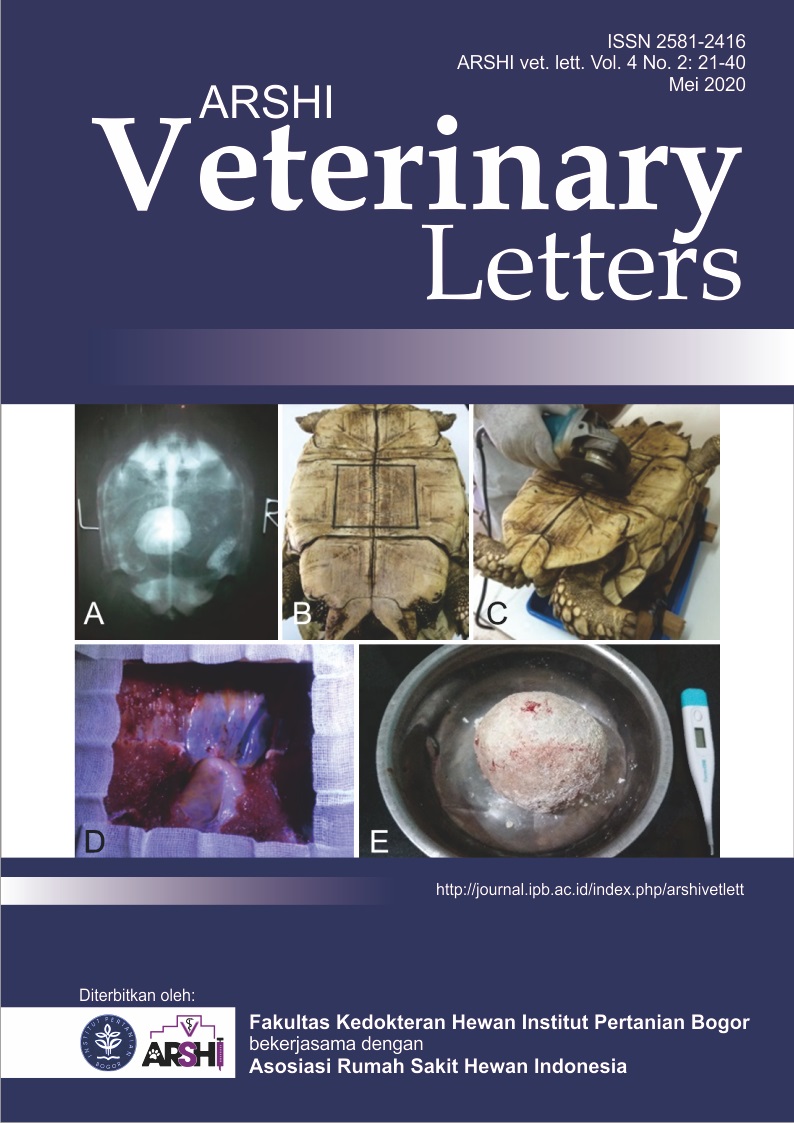Suspect cushing’s syndrome pada kucing
Abstract
Cushing’s syndrome yaitu sindrom klinis yang disebabkan kelebihan sekresi kortisol oleh kelenjar adrenal. Keluhan pemilik hewan kucing adalah adanya kebotakan dibagian perut kanan dan kiri, sering minum, dan sering urinasi. Temuan klinis adalah pembesaran abdomen seperti ‘pot-bellied’, polidipsia, poliuria dan alopecia bilateral pada bagian abdomen. Diagnosa penunjang melalui pemeriksaan ultrasonografi. Diagnosa banding adalah hipotiroid, pankreatitis dan dermatophytosis. Prognosa fausta sampai dubius. Terapi yang diberikan adalah pemberian mitotane dan ketoconazole
Downloads
References
Hoenig M. 2002. Feline hyperadrenocorticism—where are we now. Journal of Feline Medicine and Surgery. 4(3): 171-174.
Nelson RW, Guillermo CC. 2014. Small Animal Internal Medicine, Fifth Edition. Missouri (US): Mosby Elsevier
Niessen SJ, Church DB, ForcadaY. 2013. Hypersomatotropism, acromegaly, and hyperadrenocorticism and feline diabetes mellitus. Veterinary Clinics: Small Animal Practice. 43(2): 319-350.
Rossmeisl JJH, Scott MJC, Siems J, Snyder PW, Wells A, Anothayanontha L, Oliver JW. 2000. Hyperadrenocorticism and hyperprogesteronemia in a cat with an adrenocortical adenocarcinoma. Journal of the American Animal Hospital Association. 36(6): 512-517.
Stockham SL, Scott MA. 2002. Fundamentals of Veterinary Clinical Pathology. 1st ed. Iowa state Press:555-573.
Copyright (c) 2020 CC-BY-SA

This work is licensed under a Creative Commons Attribution-ShareAlike 4.0 International License.
Authors who publish with this journal agree to the following terms:
1. Authors retain copyright and grant the journal right of first publication with the work simultaneously licensed under a Creative Commons Attribution License that allows others to share the work with an acknowledgement of the work's authorship and initial publication in this journal.
2. Authors are able to enter into separate, additional contractual arrangements for the non-exclusive distribution of the journal's published version of the work (e.g., post it to an institutional repository or publish it in a book), with an acknowledgement of its initial publication in this journal.
3. Authors are permitted and encouraged to post their work online (e.g., in institutional repositories or on their website) prior to and during the submission process, as it can lead to productive exchanges, as well as earlier and greater citation of published work (See The Effect of Open Access).


.jpg)















